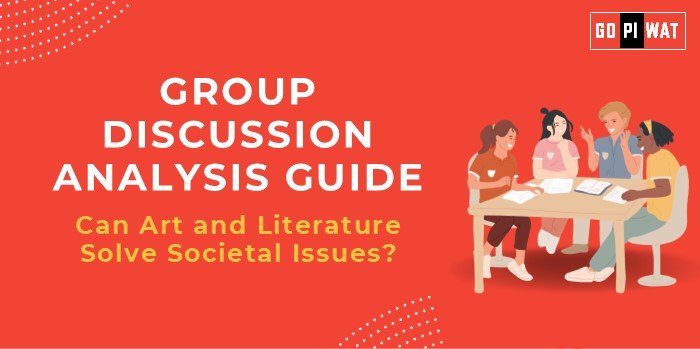📋 Group Discussion Analysis Guide
🎨 Can Art and Literature Solve Societal Issues?
🌐 Introduction to the Topic
Art and literature have long served as reflections of society’s deepest issues, providing commentary on injustice, social hierarchies, and human struggles. In modern contexts, the question arises: can they do more than mirror problems—can they help solve them? With cultural media as powerful vehicles for influence, exploring how art and literature impact society is essential for B-school students, who will likely encounter similar questions in public policy, marketing, and organizational behavior.
📊 Quick Facts and Key Statistics
- 🎨 Global Art Market Value: $67.8 billion in 2022 – highlights art’s economic footprint and cultural relevance.
- 📚 Books Published Annually: Over 2.2 million worldwide – underscores literature’s reach in disseminating ideas.
- 💡 Influence of Literary Works: Studies show increased empathy and reduced biases among readers of fiction.
- 🏙️ Public Art Installations: Research indicates increased public engagement in communities with visible art, fostering communal cohesion.
📌 Stakeholders and Their Roles
- 🎨 Artists and Writers: Creators who shape and reflect social themes, often driving awareness on societal issues.
- 🏫 Educational Institutions: Promote cultural engagement, fostering critical thinking on social issues through art and literature.
- 🌍 NGOs and Activists: Utilize creative works to advocate for causes and shift public perception.
- ⚖️ Government Bodies: Influence cultural policies and funding, impacting accessibility and representation in art and literature.
🏆 Achievements and Challenges
✨ Achievements
- 📢 Raising Awareness: Art and literature amplify causes like climate change and mental health, shaping public opinion.
- ❤️ Empathy Building: Research highlights literature’s role in empathy enhancement, helping bridge societal divides.
- 🌍 Cultural Preservation: Both mediums preserve cultural heritage, instilling pride and understanding of diverse communities.
⚠️ Challenges
- 💰 Commercialization: The rise of commercialized art sometimes undermines authenticity, limiting impactful messaging.
- 🚫 Political and Social Censorship: Restrictions can hinder artists’ and writers’ abilities to address controversial topics.
🔍 Global Comparisons
- 🇸🇪 Example: Scandinavian countries integrate art in public spaces, promoting cultural conversation and social cohesion.
- 🇿🇦 Case Study: In South Africa, public art initiatives in Johannesburg have helped address societal fractures, promoting community unity.
💬 Structured Arguments for Discussion
Supporting Stance: Art and literature create awareness and empathy, crucial for societal transformation.
Opposing Stance: Although impactful, these mediums alone cannot effect systemic change; policy and structural actions are needed.
Balanced Perspective: While not a standalone solution, art and literature complement structural efforts to address social issues.
🛠️ Effective Discussion Approaches
- 📜 Historical Reference: “Throughout history, literature from ‘Uncle Tom’s Cabin’ to ‘1984’ has shaped public attitudes and policy on social issues.”
- ❤️ Empathy Example: “Studies suggest that engaging with diverse narratives through art can reduce prejudice and foster empathy.”
- 🎭 Counter-Argument Handling: Use examples of failed or censored art movements to acknowledge limitations, while emphasizing collaborative potential with policy reforms.
🔑 Strategic Analysis of Strengths and Weaknesses (SWOT)
- Strengths: Broad reach, empathy-building, cultural influence.
- Weaknesses: Vulnerability to censorship, commercial bias.
- Opportunities: Technological innovation (e.g., digital art) for wider reach.
- Threats: Political influence, limited measurable impact on policy.
📚 Connecting with B-School Applications
- 💡 Real-World Applications: Insights for CSR initiatives, public relations strategies, or social marketing campaigns.
- ❓ Sample Interview Questions:
- “Can literature change societal biases more effectively than education alone?”
- “What role should corporations play in funding socially impactful art?”
- 🎨 Insights for B-School Students: Recognize art as a tool for engagement in community relations, public campaigns, and as a means to foster corporate social responsibility.


